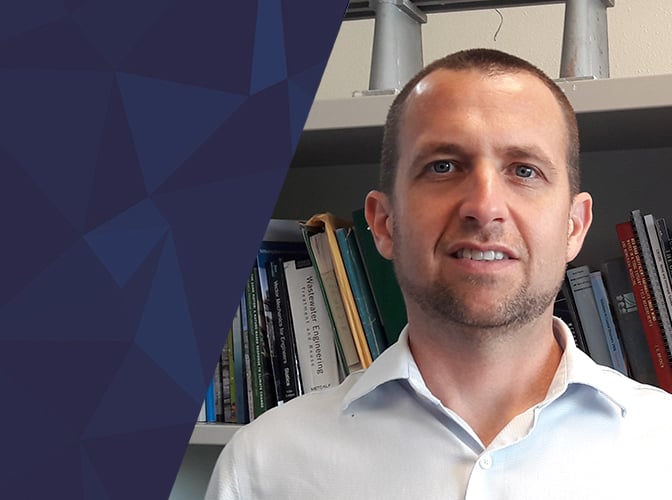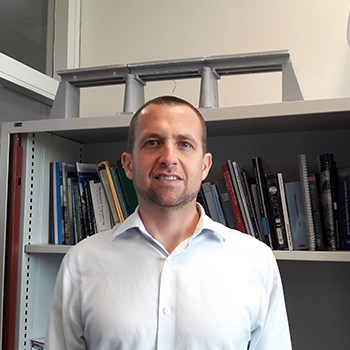
Grant Seeks to Improve Storm Surge Barriers
CEE Associate Prof. Jeremy Bricker is Part of Team Receiving NSF Grant

CEE Associate Prof. Jeremy Bricker is Part of Team Receiving NSF Grant
CEE Associate Prof. Jeremy Bricker is part of a research team that has received a $400,000 grant over three years from the National Science Foundation (NSF) social behavioral economics domain to estimate hurricane building damage and recovery inequity using insurance and social survey data. For this interdisciplinary study, the lead PI’s are a Texas A&M economist and a social scientist at Texas A&M.
The project’s goal is to understand how the Houston/Galveston proposed Coastal Spine (Ike Dike) storm surge barrier will affect residents, real estate, and overall flood risk. This barrier was proposed following the 2008 Hurricane Ike storm surge, which was 22-feet and caused widespread coastal flooding. The team will study the actual coastal flood risk in the Houston/Galveston area in the present climate, as well as a hypothetical future climate, and with and without the barrier in place.

Prof. Bricker explained: “We are asking the questions: ‘How does the presence of a barrier affect flood risk?’ ‘How does the barrier affect people’s choices of where to live?’ ‘Does it reduce vulnerability or cause a false sense of security that causes them to live in vulnerable areas?’ ‘How does all of this affect property prices?’ We want to know if the answers to these questions affect people’s choices of where to live, how this affects socioeconomic equity, and how can we make plans to improve the barriers without increasing socioeconomic inequity?”
To generate a better understanding of the ways hurricanes and their storm surges damage buildings, the research team will combine flood model results with insurance claims data from the National Flood Insurance Program. The team also seeks to understand how different types of storm surge barriers affect overall flood risk. For example, the type of barrier proposed now is similar to that built over the last decade in New Orleans, where there are movable gates to allow tides to flow in and out, and ships to pass freely. However, as sea levels rise, these barriers become less structurally reliable. Movable gates that open and close work by closing to stop a storm surge from entering. Similar barriers are also found in Germany, the Netherlands, Massachusetts, and in the United Kingdom on the Thames River.
Prof. Bricker noted, however, that the higher the sea level rises, the more frequently the barriers have to close, and thus the greater chance there is of a mechanical or operational failure. More frequent use also leads to more fatigue loading and structural stress, increasing the likelihood of structural degradation (i.e., cracks), reducing reliability. The chances of structural failure or failure to close thus increase. “As sea levels rise globally, it will be necessary to replace movable gates with a permanent dam, ship lock, and pump system if we want to protect the Houston/Galveston area,” Prof. Bricker said.
If a permanent system is used, tides are eliminated. A potential design includes a permanent dam with shipping locks. According to Prof. Bricker, this presents another issue. “Ships are no longer free to come and go, and natural tides are no longer able to come and go.”
In examining options, movable barriers are not effective against mean sea level rise, and shipping locks are needed. “The question is: At what point should that be done? Or do we just implement at the start instead of switching over. How will that affect where people live and equity? What will the total cost be? If we start with movable barriers, can we make the system adaptable to easily replace without having to rebuild a lot of the system? There are many discussions needed regarding costs versus benefits,” Prof. Bricker said.
“The damage we’re looking at is water damage–Ike was primarily from storm surge,” Prof Bricker added. “When conducting this research, the first thing a student has to do is to learn how to set up and run a storm surge simulation numerical model, where you take recorded data for wind speed and air pressures from the National Weather Service (NWS) to drive the wave model and storm surge model to calculate inundation. We need to validate against tide gauge and wave buoy data and anything that exists on the state of inundation at the time. This is to validate against real measurements. Once that’s done, we extract National Flood Insurance Program data and building-by-building information for which claims data exist. We examine the ratio of damage to insured value and how that is correlated with flow speed, water depth, wave heights, and develop damage functions. For example, for a typical two-story wooden building, what’s the level of damage expected for a given inundation depth, flow force, and wave height? These are damage functions. We use those to calculate the damage for the hypothetical hurricane scenarios. Once we have this validation done, we have to do a probabilistic flood risk analysis to calculate current and future climate with barriers. What’s the amount of inundation as a function of storm return period? This has to be done not just for one event, but for a large number of events, to carry out extreme value analysis. What’s the amount of inundation for a 100 year storm, a 1000 year storm and storms that happen with and without barriers?”
Once the extent and depth of inundation is known, researchers can apply damage functions to calculate the dollar value of each return-period storm–both in wealthy and poor neighborhoods–and project total costs. Once researchers know the level of damage in dollars, they add for each scenario with and without barriers, and can then calculate total risk. That allows the team to quantify the event by the damages that can be avoided or the exacerbation of damage due to climate change. This formula also allows researchers to quantify how different barrier types affect damages. If the team knows that information, they then have a way to quantify which barrier type is more economically efficient, or at what point in time with regard to sea-level rise it should be replaced with a permanent barrier.
From a socioeconomic standpoint, researchers seek ways to best implement infrastructure to enhance equity. “How can we prevent people from developing a false sense of security?” Prof. Bricker said. “From the social-science standpoint, what are people’s reactions to a barrier going to be? How will the presence of one change the value of property and where people want to live? These issues will become more important as seas rise and climate changes over the long term.”

Marketing Communications Specialist
Department of Civil and Environmental Engineering